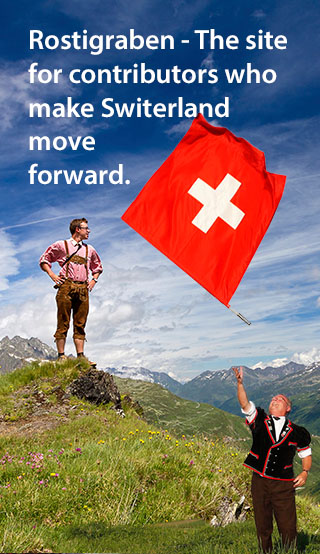In 2014, poor weather forced organizers to close parking areas that were too muddy. Rather than skipping the show, festival-goers made do with public transport and car-pooling.
Those who attended the Paleo Festival last year remember: mud, mud everywhere. Torrential rains before and during the festival turned the parking areas into a mud pit, making them unusable. The organizers had to activate the “Rain Plan,” closing off the parking areas and asking festival-goers to leave their cars at home and find other means of transport. Did the rain spoil the party? Not at all, according to a survey by EPFL sociologists. Those surveyed reported being satisfied or very satisfied with their experience reaching the site (89%) and leaving it (85%). These figures are just slightly lower than those from two years ago (90% and 87%). But the reason for this decrease may have more to do with Stromae than the weather…oh, the joys of bottlenecks!
The mud forced festival-goers to get organized. The number of people getting behind the wheel showed a particularly steep drop. While a good third of attendees drove their car in 2012, just over one in five did so in 2014. Both years, around 20% hitched a ride with another driver.
There was also a shift to public forms of transport: in 2014, 36% of those surveyed made use of them exclusively, versus 29% in 2012. “But forgoing the car didn’t only ramp up the use of public transport,” said Emmanuel Ravalet, a researcher at the Urban Sociology Laboratory (LaSUR) and one of the authors of the study. “More festival-goers also used a combination of cars and public transport.” Altogether one out of ten people changed their method of transport due to the Rain Plan.
In 2012 Paleo Festival first commissioned LaSUR to carry out a survey, coordinated by the EPFL Transportation Center, on access to the site of the Festival. Called on by the festival organizers to assess the impact of the Rain Plan, LaSUR then used the results of the 2012 and 2014 surveys, which were based on a representative sampling of some 500 people.
Faithful fans riding together
Festival-goers responded to the miserable weather with an unexpected degree of last-minute organizational skills. Seven out of ten people who changed their travel plans did so on the day they attended, as the parking restrictions were only announced the previous evening. The researcher chalks this flexibility up to two factors: most festival-goers come from the Cantons of Vaud and Geneva, and the Paleo Festival Nyon has a very faithful following – only 13% of respondents were going for the first time. In other words, Paleo fans know each other and get organized when they have to.
“This means that there is some scope for people to change their means of transport,” said Ravalet. “However, the shift is more towards formal and especially informal car-pooling than towards public transport.” Among the negatives, nearly 30% of dissatisfied respondents noted that the public transports were too full, while just under 10% mentioned parking problems.
Stromae effect
The Rain Plan did not dampen the spirits of festival-goers, who reserved their ire for what took place on Wednesday, 23 July. Or rather the wee hours of the 24th, when the show put on by Belgian musician Stromae came to an end. The 40,000 people who stayed to hear the final chords did not all make it out without a hitch. 20% of them spent at least one hour – and in some cases more than two – trying to exit the parking area, while on the other days this figure rarely went above 30 minutes. Bottlenecks ruined the end of the evening for 26% of drivers. Much more so than packed public transport, which left only 6% of users dissatisfied.
Article by Anne-Muriel Brouet, Mediacom – EPFL
Image : © Paléo / Pierre Descombes
This young icon is on Top of the wellness trend Next Post:
What if all cars were electric?


